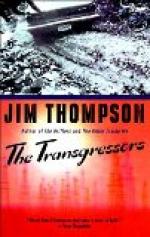In the thirty days that intervenes between the acts of annihilation and the election, two hundred and fifty thousand miners and other operatives in Pennsylvania are benefiting by the disbursement of the Purdy millions. This army of prosperous men makes the state certain of going to the Independents. The electoral votes of the Keystone state, it is certain, will decide the election.
As an object lesson which speaks more eloquently than words, Harvey adopts a suggestion which Sister Martha had made at the opening of the campaign and which had not been used because of lack of funds.
Biograph pictures of happy and contented miners in Pennsylvania, under the co-operative system, showing them at their work and at their decent homes, surrounded by their families, well fed, and clothed, are obtained in manifold sets. To contrast with these, there are pictures taken from the actual scenes in other parts of the country, showing women harnessed to the plow with oxen; women at work in the shoe factories, the tobacco factories, the sweat-shops. Pictures of the children who operate the looms in the cotton mills and the carpet factories are obtained to be contrasted with those which exhibit children at their proper places in the school room and on the lawns of the city parks.
The pomp of the Plutocrats and the destitution of the masses is portrayed by these striking contrasts.
With this terrible evidence the Independents carry their crusade into every city. The principal public squares of the cities are used to exhibit the biograph pictures. Night after night the crowds congregate to view the pictorial history of the Plutocratic National Prosperity. That which arguments cannot do in the way of weaning men from party prejudice the picture crusade accomplishes.
One of the side lights of the great drama that is being enacted is the sentiment that develops for the Committee of Forty. Memorial societies in the states from which the several committeemen hailed, are formed to give the martyrs, as the forty are now called, a decent burial. Thirty-nine of the martyrs are thus honored by public interment.
The one missing committeeman is William Nevins. He is supposed to be buried in the wrecked tunnel under the English channel. It is impossible to repair the damage done by the explosion; futile efforts are made by sub-marine divers to locate the exact point at which the break in the tunnel was made. The action of the water has totally obliterated the breach. So to the public this watery grave must remain the resting place of the genius who conceived the plan for the restoration of the rights of man.
All of the details of the committee come to light through the papers found on the body of Hendrick Stahl, secretary of the committee. The fact that Nevins was alone responsible for the plan of annihilation and that Trueman knew absolutely nothing of it, is incontestibly established.




